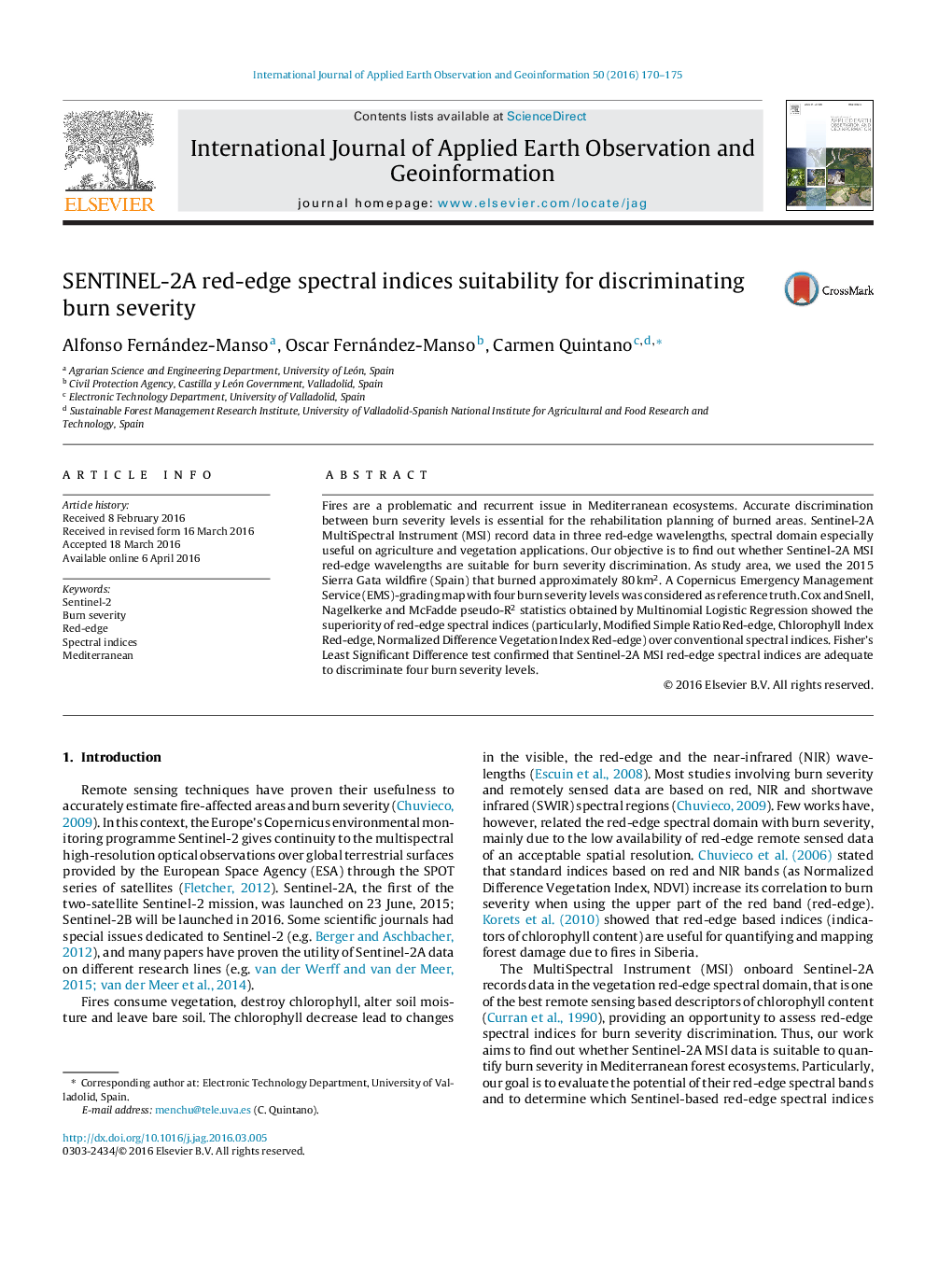| Article ID | Journal | Published Year | Pages | File Type |
|---|---|---|---|---|
| 4464593 | International Journal of Applied Earth Observation and Geoinformation | 2016 | 6 Pages |
•Potential for red-edge wavelengths to indicate burn severity is examined.•Sentinel-2A MSI red-edge spectral indices were considered.•MLR proved the superiority of red-edge spectral indices over conventional ones.•Fisher's LSD test showed that red-edge spectral indices discriminate burn severity.•Method applied to Northern Spain, 2012, but with potential for extrapolation.
Fires are a problematic and recurrent issue in Mediterranean ecosystems. Accurate discrimination between burn severity levels is essential for the rehabilitation planning of burned areas. Sentinel-2A MultiSpectral Instrument (MSI) record data in three red-edge wavelengths, spectral domain especially useful on agriculture and vegetation applications. Our objective is to find out whether Sentinel-2A MSI red-edge wavelengths are suitable for burn severity discrimination. As study area, we used the 2015 Sierra Gata wildfire (Spain) that burned approximately 80 km2. A Copernicus Emergency Management Service (EMS)-grading map with four burn severity levels was considered as reference truth. Cox and Snell, Nagelkerke and McFadde pseudo-R2 statistics obtained by Multinomial Logistic Regression showed the superiority of red-edge spectral indices (particularly, Modified Simple Ratio Red-edge, Chlorophyll Index Red-edge, Normalized Difference Vegetation Index Red-edge) over conventional spectral indices. Fisher's Least Significant Difference test confirmed that Sentinel-2A MSI red-edge spectral indices are adequate to discriminate four burn severity levels.
